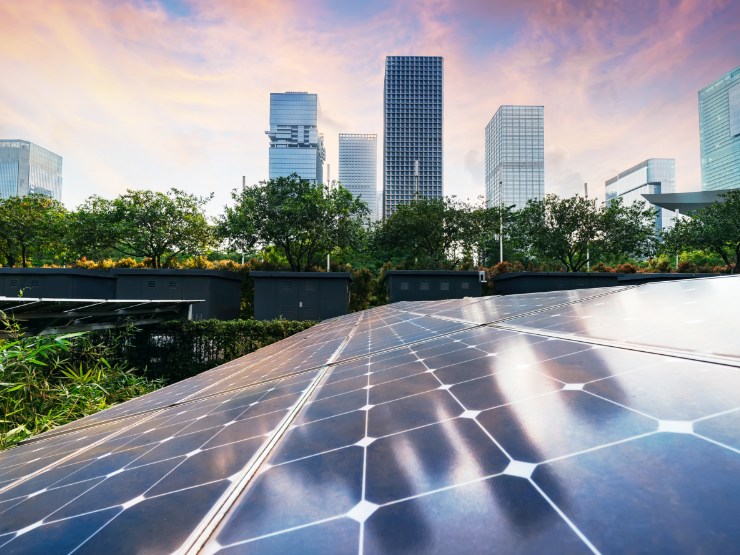-
Featured services
2026 Global AI Report: A Playbook for AI Leaders
Why AI strategy is your business strategy: The acceleration toward an AI-native state. Explore executive insights from AI leaders.
Access the playbook -
Services
View all services and productsLeverage our capabilities to accelerate your business transformation.
-
Services
Network Services
-
Services
Cloud
-
Services
Consulting
-
-
Services
Data and Artificial Intelligence
- AI and Intelligent Solutions
- Data/AI Strategy and Program
- Data Engineering and Platforms
- Data Governance and Management
- Data Visualization and Business Decision
- GenAI Consulting
- GenAI Platforms
- GenAI Industry Services
- GenAI Infrastructure Services
- GenAI Value Transformation
- View Data and Artificial Intelligence
-
Services
Infrastructure Solutions
-
Services
Global Data Centers
-
Services
CX and Digital Products
-
Services
Application Services
-
Services
Sustainability Services
-
Services
Digital Workplace
-
Services
Business Process Services
-
Services
Generative AI
-
Services
Cybersecurity
-
Services
Enterprise Application Platforms
![]()
Accelerate outcomes with agentic AI
Optimize workflows and get results with NTT DATA's Smart AI AgentTM Ecosystem
Create your roadmap -
-
-
Insights
Recent Insights
-
The Future of Networking in 2025 and Beyond
-
Using the cloud to cut costs needs the right approach
When organizations focus on transformation, a move to the cloud can deliver cost savings – but they often need expert advice to help them along their journey
-
Make zero trust security work for your organization
Make zero trust security work for your organization across hybrid work environments.
-
-
![]()
2026 Global AI Report: A Playbook for AI Leaders
Why AI strategy is your business strategy: The acceleration toward an AI-native state. Explore executive insights from AI leaders.
Access the playbook -
-
2026 Global AI Report: A Playbook for AI Leaders
Why AI strategy is your business strategy: The acceleration toward an AI-native state. Explore executive insights from AI leaders.
Access the playbook -
Discover how we accelerate your business transformation
-
About us
CLIENT STORIES
-
Liantis
Over time, Liantis – an established HR company in Belgium – had built up data islands and isolated solutions as part of their legacy system.
-
Randstad
We ensured that Randstad’s migration to Genesys Cloud CX had no impact on availability, ensuring an exceptional user experience for clients and talent.
-
-
CLIENT STORIES
-
Liantis
Over time, Liantis – an established HR company in Belgium – had built up data islands and isolated solutions as part of their legacy system.
-
Randstad
We ensured that Randstad’s migration to Genesys Cloud CX had no impact on availability, ensuring an exceptional user experience for clients and talent.
-
![]()
2026 Global AI Report: A Playbook for AI Leaders
Why AI strategy is your business strategy: The acceleration toward an AI-native state. Explore executive insights from AI leaders.
Access the playbook -
- Careers
How intelligent technology is reshaping the post-lockdown workplace
01 October 2020

Topics in this article
When it comes to work, COVID-19 forced the fast and widespread shift to remote working around the world. While the home office may be here to stay, forward-thinking companies are also creating physical office environments that balance safety, health, sustainability, and embraces employee experience in a whole new way. As companies increasingly strive to lead by prioritizing purpose and placing empathy into their mission and values, what role do intelligent buildings play in shaping a safer, more sustainable workplace?
Delivering the new, distributed workforce
Technology holds the key to solving some of the world’s greatest challenges and is playing a central role in the world’s response to COVID-19. Remote working hasn’t always been seamless, and many of us are looking forward to returning to the office. The very real challenges of juggling a busy household, maintaining a healthy work-life balance, and fluctuating productivity levels are difficult to manage.
Returning teams to the office means combining technology, physical space and policy to create a safer and sustainable environment. Employees need to be equipped with intuitive tools and solutions that provide a frictionless experience, helping them improve contribution and provided in a space that inspires and connects.

Safely returning employees to the office means combining technology, physical space and well-being
As we continue to navigate our lives during COVID-19, workforces will become increasingly flexible with hybrid ways of working; with time divided between the home and physical offices. The new distributed workforce is driven by activity-based working, where employees schedule their time in the office, based on availability and capacity. Appointments are made by team members who are looking to collaborate or perform a task in-person, spaces are then chosen based on how and when tasks need to be completed.
Intelligent buildings optimize the workplace for wellness and performance
Companies will thrive when they think beyond the immediate crisis and consider how their choices will foster long term success. The decisions and investments an organization makes in the health and safety of employees not only reflects on their brand and team experience but also how they attract and retain talent. Organizations can improve employee engagement and increase contribution through space designed with all the necessary health and safety measures, thermal comforts and aesthetic appeal in mind.
The intelligent office drives improved sustainability by reducing energy consumption and offering predicative maintenance, positively contributing to an organization’s environmental, social and governance goals, as well as reduce operational costs. Taking a holistic approach by using the concept of extensibility, where previously siloed systems are now designed to connect to a central location also known as Digital Twin, different teams can access unparallel insights to how buildings, space and people combine and where efficiencies and improvements can be achieved.

As we work towards making cities more inclusive, safe, resilient and sustainable; we recognize that intelligent buildings and workplaces play an important role in creating smart cities
COVID-19, the catalyst for digital acceleration and sustainability
The pandemic is fueling the demand for a safe and positive workplace experience that meet public health and safety guidelines. Organizations are fast-tracking existing workplace programs to cater for business continuity. What was planned for three years is now condensed to 12 to 18 month timeframes.
Technology that organizations may have placed on a future wish list is suddenly needed now. Intelligent buildings are helping companies bring their employees back to work and providing auditable data to show how social distancing, capacity planning and other regulatory requirements are being met. These environments are providing a connected experience for the employee and visitor. The access system is connected to the ‘Back to Office’ booking application that also links to the heating, air ventilation, lighting options. At the touch of a button, variables can be automatically managed to provide an optimal and safe environment.
As NTT. Ltd works closer towards the goal of making cities and communities more inclusive, safe, resilient and sustainable; we recognize that intelligent buildings and workplaces play a critical role in creating smart cities. By helping cities, we help the world. A more connected future is one that houses intelligent buildings with networking to track sustainability performance that can also interact with other areas of the city to improve wider society. Realizing the combined value of connected employees and intelligent buildings is one way we can contribute to building a better, more sustainable post-pandemic world.
Read more about NTT Ltd. Intelligent Workplace solutions and learn what we’re doing to create more sustainable cities and communities.



